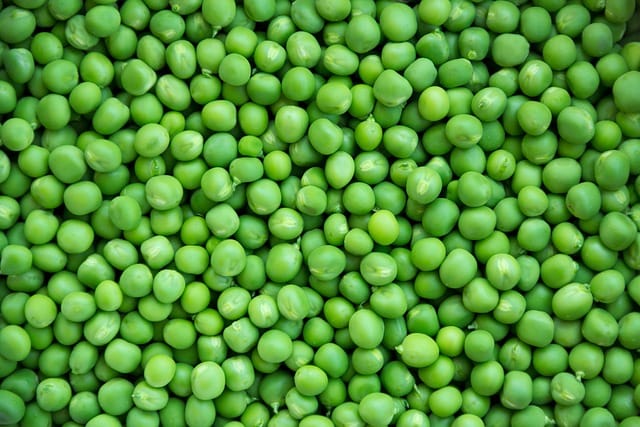How to grow Sweet Peas
The Sweet Pea flower (Lathyrus odoratus) is a popular choice among gardeners for its vibrant colors, delicate fragrance, and the abundance of blooms it produces

In this article:
- Introduction
- Choosing the right variety of Sweet Peas
- Preparing the soil for planting
- Planting Sweet Peas
- Providing support for climbing Sweet Peas
- Watering and fertilizing Sweet Peas
- Pruning and training Sweet Peas
- Dealing with common pests and diseases
- Harvesting Sweet Peas
- Extending the blooming period
- Collecting and saving Sweet Pea seeds
- Conclusion
Introduction
The Sweet Pea flower (Lathyrus odoratus) is a popular choice among gardeners for its vibrant colors, delicate fragrance, and the abundance of blooms it produces. Growing Sweet Peas can be a rewarding experience, and with the right knowledge and care, you can enjoy their beauty in your own garden.
Choosing the right variety of Sweet Peas
Before starting your Sweet Pea journey, it is important to choose the right variety that suits your preferences. There are various types of Sweet Peas available, including dwarf, tall, climbing, and trailing varieties. Consider factors such as flower color, height, and fragrance to find the perfect Sweet Peas for your garden.
Preparing the soil for planting
Sweet Peas thrive in well-draining soil with organic matter. Prepare the soil by removing any weeds, rocks, or debris. Mix in compost or well-rotted manure to improve the soil's fertility. It is also a good idea to add some granular fertilizer to provide essential nutrients.
Planting Sweet Peas
Plant Sweet Peas in early spring or fall when the soil is cool and the temperatures are mild. Make sure to soak the seeds overnight before planting to speed up germination. Dig a hole that is twice the depth of the seed and space them about 6 inches apart. Cover the seeds with soil and gently firm it down.
Providing support for climbing Sweet Peas
Most Sweet Peas are climbers and require support to grow vertically. Install trellises, fences, or stakes before planting the seeds to ensure the plants have something to cling onto. This will prevent them from sprawling on the ground and protect them from damage.
Watering and fertilizing Sweet Peas
Water sweet peas regularly, especially during dry spells. Keep the soil consistently moist but avoid overwatering, as it can cause root rot. Apply a balanced liquid fertilizer every few weeks to provide the plants with essential nutrients. However, be cautious not to over-fertilize as it can lead to excessive foliage growth at the expense of flowers.
Pruning and training Sweet Peas
Sweet Peas benefit from regular pruning and training to promote healthy growth and increase flower production. Pinch out the growing tip of the plant when it reaches about 6 inches tall to encourage branching. Remove any dead, diseased, or damaged parts of the plant to maintain its overall health and appearance.
Dealing with common pests and diseases
Sweet Peas can be vulnerable to pests such as aphids, slugs, and snails. Monitor your plants regularly and take appropriate measures such as spraying organic insecticides or using physical barriers to protect them. Furthermore, keep an eye out for common diseases like powdery mildew and take prompt action to prevent their spread.
Harvesting Sweet Peas
Enjoy the beauty and fragrance of Sweet Peas by harvesting them regularly. Cut the flowers early in the morning when they are fully open. This will ensure more blooms on the plant and allow you to enjoy them indoors as well. Use sharp scissors or pruners to make clean cuts just above a leaf node.
Extending the blooming period
To extend the blooming period of your Sweet Peas, deadhead regularly. Remove spent flowers by pinching them off to prevent the formation of seed pods. This will redirect the plant's energy into producing more blooms. Additionally, keep up with proper watering and fertilizing practices to support continuous growth and flowering.
Collecting and saving Sweet Pea seeds
If you want to preserve and grow Sweet Peas from your favorite plants, collecting and saving seeds is a great option. Allow the seed pods to fully mature and turn brown on the vine. Harvest the pods and let them dry completely before gently breaking them open to collect the seeds. Store the seeds in a cool, dry place until the next planting season.
Conclusion
Growing Sweet Peas can be a delightful experience, rewarding you with beautiful blooms and a heavenly fragrance. By following the tips mentioned above, you can create an enchanting display of these lovely flowers in your garden. Remember to provide proper care, including soil preparation, support, watering, and pruning, to ensure the healthy growth of your Sweet Pea plants.
